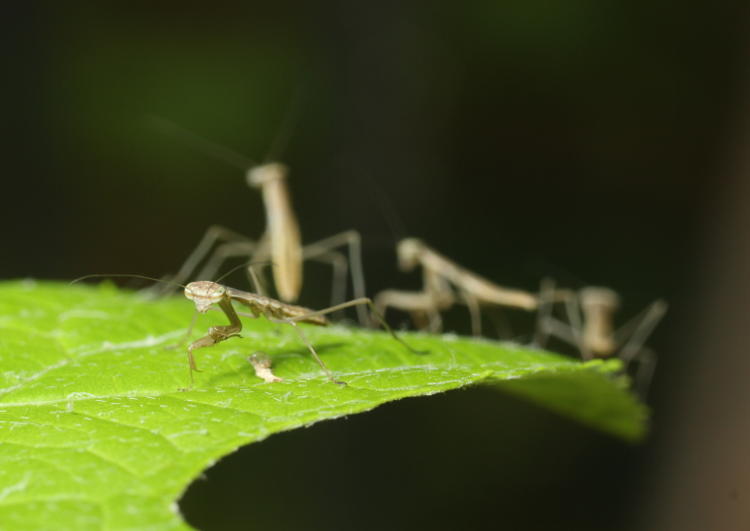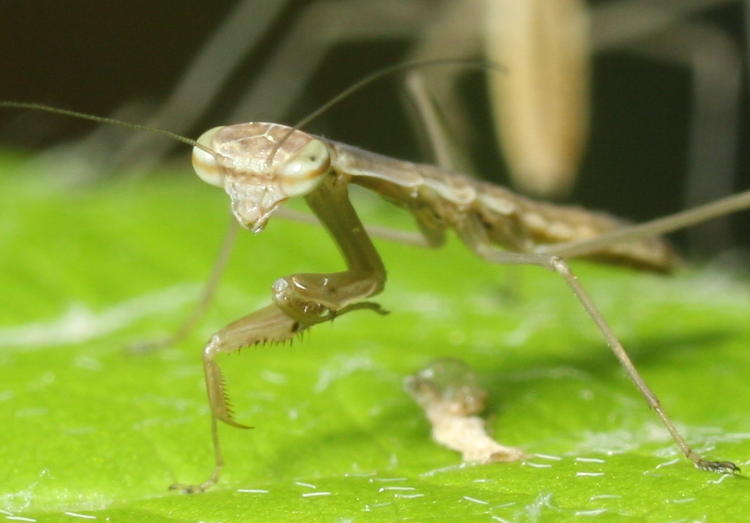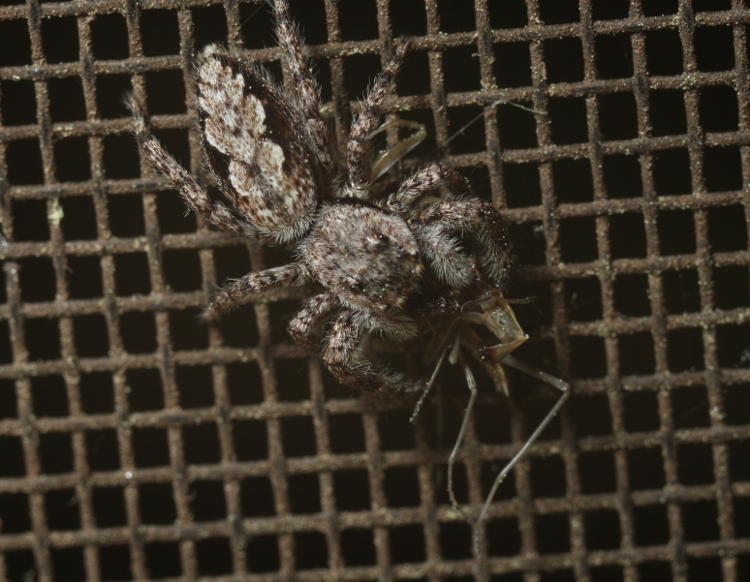
So, to the undoubtedly-voluminous number of readers who come in first thing in the morning on Fridays to find the Storytime posts, I apologize – I am quite late today, mostly due to having a really shitty week. But partially due to my subject here, and so this is going to be the most current Storytime post to date, since these images were taken only minutes ago.
I mentioned earlier about finding some Chinese mantis (Tenodera sinensis) egg cases, or oothecas, to distribute in ideal locations around the yard and hopefully get some photos or video of the moment of emergence, something I have yet to capture. Unfortunately, I did not find the time to properly place them in the yard, and a day or so ago two of them hatched out. Thankfully, this was on the screened porch and not, for instance, in the office (I’m not that stupid,) but it still meant that I had to capture several dozen/hundred 10mm long buggers to bring them outside. This isn’t too awful hard – they tend to drop at the first sign of danger, so for the most part all I had to to was hold a container underneath them and touch them gently with an index card – but the sheer number of them, and the hiding places available on the porch, means that this will be an ongoing pursuit for a couple of days. So in between mantis rodeo sessions, I not only mounted and distributed the remaining egg cases, I did a few photos of the ones I’d already released. These in particular had been relocated to the oak-leaf hydrangea (Hydrangea quercifolia) plant, the same one that appeared here. But here’s a closer look of the same foreground mantis – remember, overall length is 10mm.

They were being shy and darting away every time I leaned close, but this one held its ground and, for one decent frame anyway, I managed to nail focus. I’ve said this before, but it’s as much a matter of luck and timing as it is skill – effective focus range is measured in millimeters or less, and I wasn’t bracing against anything. You try to hold perfectly still at a precise distance from something.
At the time that I first spotted them, a jumping spider had already discovered one by itself – quite likely the same spider seen in the previous post. I had to leave for work shortly afterward and couldn’t even begin to corral the mantids outdoors, but I figured the spider’s capture would hold it for a day or so.

While it’s tempting to lament such a fate, it likely will hold true for countless of the mantids – dozens emerge from an egg sac, but only a few will reach adulthood; this is one of the few where I’ve actually witnessed its demise, while I suspect that cannibalism may be a factor at times. Seems barbaric to us, but evolution only sees to it that a set of genes passes along, and if just one survives to reproduce, even at the expense of others from the same brood, that’s still a genetic win (as opposed to none of them making it, of course.) But I’m aware of this too, and the newborns were distributed across a broad expanse of the property, much broader than they would have achieved on their own at this stage – the equivalent of several smaller egg cases rather than one large one. Is this an advantage or not? We might just have to see.




















































